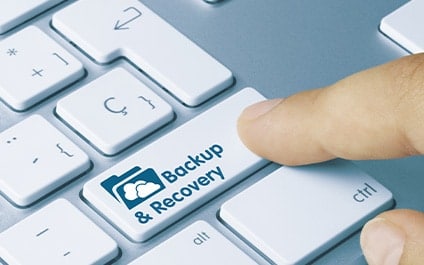
Hurricane season is right around the corner. Therefore, in today’s digital age it’s easy to distract ourselves from the fact that we live in the physical world where real-life disasters are a potent threat to our computing capabilities. This March, taking the time to observe one relatively obscure holiday could be the difference between getting pummeled by the elements or being truly prepared. The little-known, often ignored, World Backup Day was placed on March 31st to warn us all to back up our data or risk ending up looking like April fools. In celebration, we’re taking this idea even further and detailing some essential steps you can take to make sure you’re fully prepped no matter which way the wind blows.
Formulate A Disaster Recovery Plan
If you sit down and back up your data on World Backup Day, you’ll have taken an excellent first step towards protecting your business. However, you won’t be truly ready for real-world threats (like hurricanes or big summer storms) unless you spend the time to create a disaster recovery plan. A good DR plan creates a robust set of protocols to follow that will keep your critical operations up and running while you address the impact of the disaster at hand. It gives your employees the blueprint for what to do when faced with a seemingly impossible situation, and developing one is paramount to being fully prepared.
Evaluate Risks and Impact
The first piece to the puzzle is assessing every aspect of your business that might be at risk and how you’ll manage to adjust, if and when they are affected. Performing a risk assessment and/or business impact analysis can help you identify the technology, personnel, and physical facilities that are crucial to your business’s day-to-day operations. Make sure to take all factors into account including elements like surrounding geography, local infrastructure, available power sources, and possible effects on communication networks when measuring the potential impact of a disastrous turn of events.
Create Objectives
Now that you’ve figured out what critical business activities you need to protect or replace, you’ll want to define a Recovery Time Objective for every function. Since time is of the essence in any emergency RTO’s are helpful to identify the amount of time an application or operation can be offline without drastically impacting your business. With RTO’s in place, you can also define Recovery Point Objectives, a target time within which each function should be fully recovered. When assessing these two timeframes, it’s helpful to remember what you’ve promised your customers, users, and/or stakeholders and develop what would be acceptable response times from their perspective.
Finalize Your Plan
Using the above, you should be able to start the process of taking action and finding workable solutions that can ensure your business stays up and running when it all hits the fan. However, to make sure everyone is on the right page, you’ll want to put this plan down on paper, summarize the key steps, and distribute it to every employee in your operation. Make sure to include key personnel contact info, define the roles of each team member clearly and plainly state everyone’s responsibilities. Don’t skimp on the details because the more specific and well thought out your plan is, the more likely it is to succeed.
Uprite Services Provides Effective IT Services
If all this seems daunting, it’s because it should be. Dealing with disaster recovery is never an easy process no matter how well you plan. If you need help finding realistic solutions, contact Uprite Services. Our Backup and Disaster Recovery (BDR) Services can expertly assess risks, develop clear-cut strategies and help you implement full disaster recovery plans, so you can re-focus your efforts on more important things.

